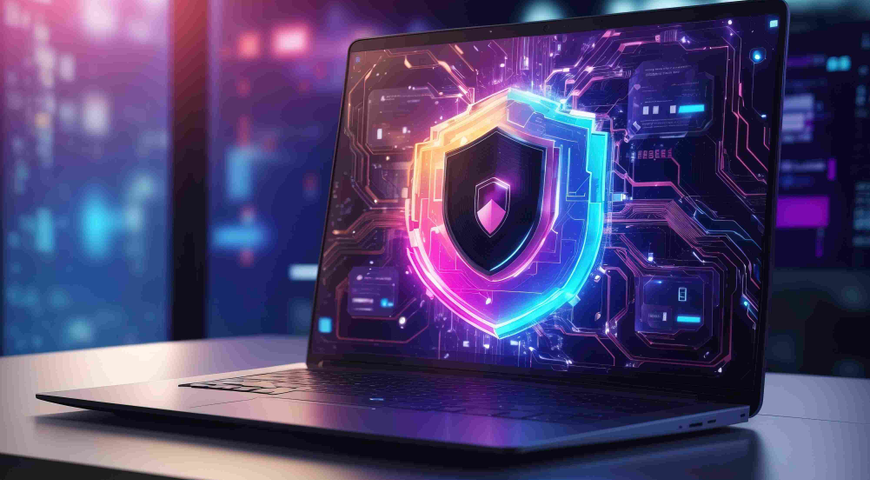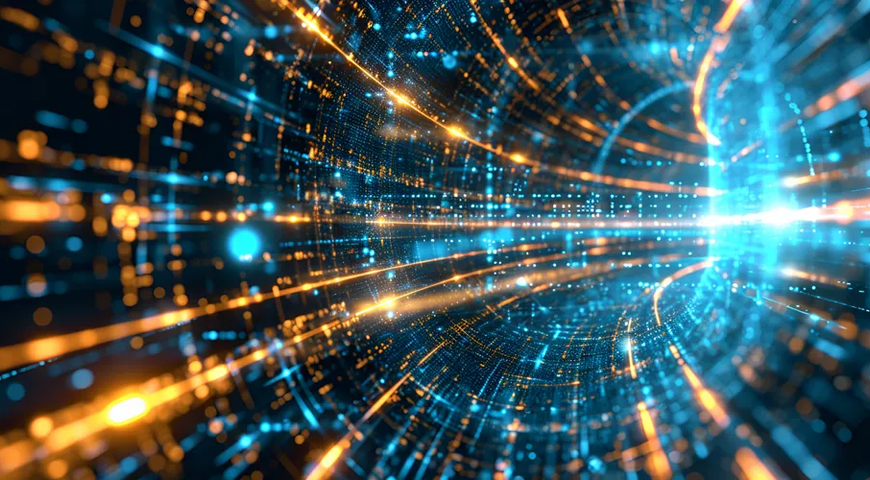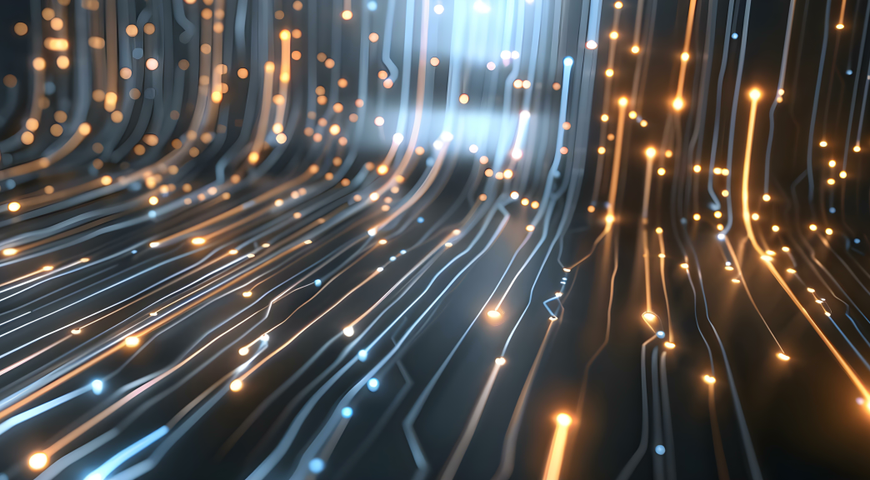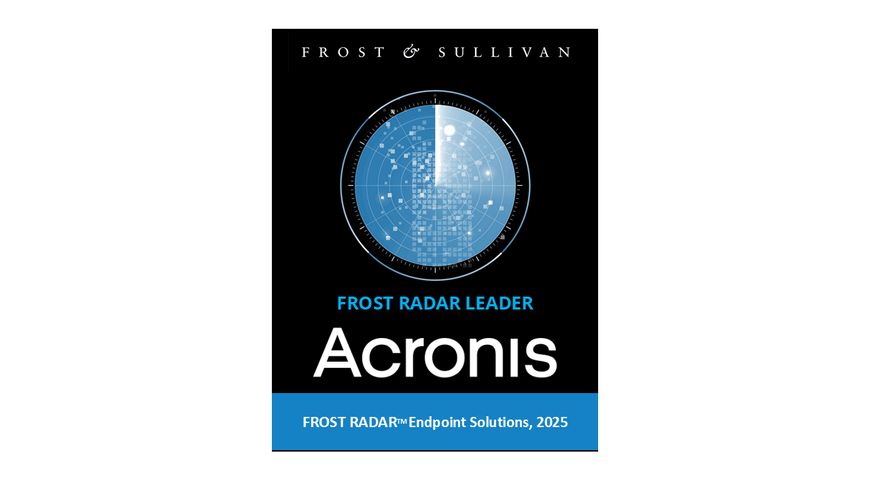
The internet is a vast, sprawling network were information flows freely and endlessly. However, beneath the surface web that most of us are familiar with lies a less understood and more obscure part of the internet: the dark web. This hidden segment offers privacy and anonymity but also presents significant risks that necessitate robust dark web cybersecurity measures. This comprehensive guide will delve into the dark web, outline its risks, emphasize the importance of security, and introduce effective tools and practices, including the features and benefits of Acronis True Image, to help you navigate this shadowy world safely.
What is the dark web?
The dark web is accessible only through special software that anonymizes user identities and locations, the most common being The Onion Router (Tor).
Some of the key characteristics are:
- Anonymity: The primary feature of the dark web is its ability to keep users and website owners anonymous. Tools like Tor route internet traffic through multiple servers and encrypt it at each step, making it extremely difficult to trace users' activities or determine their identities.
- Privacy: Due to its encryption and routing methods, the dark web is a haven for individuals seeking privacy from government surveillance, corporate tracking or third-party spying.
- Content: While the dark web hosts a variety of content, it is infamously known for harboring illegal marketplaces that sell drugs, weapons and stolen data. However, it also supports legitimate uses such as activist communication in oppressive regimes, private communication channels for journalists and whistleblowers, and secure networks for sensitive organizational operations.
What are the differences between dark web and the “normal” web?
The surface web, in contrast, is the part of the internet that most people are familiar with. It is indexed by search engines like Google, Bing and Yahoo, and is easily accessible through standard web browsers like Chrome, Firefox, Microsoft Edge and Safari. Here are some distinctions:
- Accessibility: The surface web is readily accessible and easy to navigate using common search engines that index web pages to allow users to find information quickly. In contrast, the dark web requires specific tools and knowledge of exact URLs, as its content does not appear in search engine results.
- Surveillance and tracking: Unlike the dark web, the surface web is heavily monitored. Users' activities can be tracked by internet service providers, government agencies and corporations for various purposes, ranging from advertising to legal surveillance.
- Content regulation: The surface web is subject to regulations and laws. Illegal content can be reported and removed, and there are mechanisms in place to handle copyright, defamation, and other legal issues. The dark web, however, operates with minimal oversight, which is why it can be a breeding ground for illegal activities.
The dark web is a secluded and anonymized part of the internet, designed to offer privacy and secrecy. It contrasts sharply with the surface web, which is open, indexed and regulated. While the dark web can serve as a tool for privacy and freedom, its shield of anonymity also makes it a space conducive to illegal activities. Understanding these differences is crucial for recognizing the potential risks and benefits associated with various parts of the internet and the need of proper dark web cybersecurity measures.
What are the differences between the deep web and the dark web? The terms "dark web" and "deep web" are often used interchangeably, but they refer to distinctly different parts of the internet. Understanding the nuances between them is crucial for anyone navigating the digital world, whether for research, security or curiosity.
The deep web
The deep web encompasses all parts of the internet that are not indexed by traditional search engines like Google, Bing, or Yahoo. This includes any information that is protected behind paywalls, has restricted access, or is not linked to surface web pages in a way that search engines can easily discover. Here are some key characteristics of the deep and how it functions:
- Size and scope: The deep web is vast, comprising a significant portion of the total internet. It is much larger than the surface web, which is accessible through standard search engines.
- Content: It includes anything behind a paywall (such as subscription services), proprietary databases (like academic journals, private forums, or databases), and other confidential resources (such as medical records, financial records and legal documents that are not meant for public view).
- Accessibility: Accessing deep web content typically requires direct URLs or login credentials. It is not hidden in the cryptographic sense but is simply not accessible to search engine crawlers.
- Purpose: The deep web is mostly used for legitimate purposes, providing a way to secure and privatize information. Organizations, individuals and companies use the deep web to store and share sensitive data securely.
- Security measures: The deep web employs different security measures to protect sensitive data. These include encryption protocols, secure login processes, and access controls to ensure that only authorized users can access the data. Even though not being indexed by search engines, strong dark web security practices is essential to protect against unauthorized access and potential breaches.
The dark web
The dark web, on the other hand, is a small portion of the deep web that has been intentionally hidden and is inaccessible through standard web browsers. The dark web is often associated with illegal activities, but it also serves as a platform for privacy-focused communications and legally sensitive activities. Here are the defining features of the dark web:
- Anonymity: The dark web is specifically designed for anonymity, utilizing encryption and special protocols to hide the identity of users and site operators. This is achieved through networks such as Tor (The Onion Router) or I2P (Invisible Internet Project), which route user connections through multiple servers to mask IP addresses and location details.
- Content: While the dark web hosts a variety of content, it is notorious for its illegal marketplaces that sell drugs, firearms, stolen data and more. However, it also includes forums for political dissidents, whistleblowers and other groups or individuals seeking privacy for safety reasons.
- Accessibility: Accessing the dark web requires specific tools like the Tor browser, which allows users to connect to sites using the .onion domain. These sites are not accessible through standard web browsers.
- Purpose: The primary purpose of the dark web is to provide anonymity and confidentiality, which can be used for both legal and illegal purposes. It serves as a double-edged sword, offering protection for those who need it for legitimate reasons, while also providing a shield for those who engage in criminal activities.
- Security measures: deep web security is paramount, given its emphasis on anonymity and privacy. Users often employ advanced encryption techniques, anonymous browsing tools, and cryptocurrency transactions to maintain secrecy. This environment is safeguarded by various cybersecurity protocols designed to protect user identities and data from being exposed.
In summary, while both the deep web and the dark web are parts of the internet not indexed by standard search engines, they serve hugely different purposes and populations. The deep web is a vast area hosting a range of confidential yet mostly legal content, protected from the public for privacy and security reasons. The dark web, however, is much smaller and is deliberately hidden, providing users with anonymity and access to both legal and illegal content. Understanding these distinctions is crucial for employing robust dark web protection and security.
What are the risks on the dark web?
Navigating the dark web comes with inherent risks due to its anonymity and lack of regulation. Here is a detailed look at the potential threats and the impact they can have on individuals and organizations who don’t imply proper dark web protection when using it:
1. Identifying Threats on the Dark Web
The dark web's primary allure for many users is its ability to anonymize their identities and activities. However, this anonymity also makes the dark web a fertile ground for various threats, including:
- Malware: The dark web is notorious for being a marketplace for malware, including ransomware, spyware, and Trojans. These can be used to infiltrate, damage, or control victims' devices.
- Phishing attacks: Phishing sites on the dark web often mimic legitimate sites to steal users' credentials or personal information.
- Exploit kits: These are tools used to exploit vulnerabilities in software installed on computers and other devices. They are often sold or traded on the dark web.
Understanding these threats is crucial for anyone venturing into the dark web, as it prepares them to take proactive measures for dark web protection and to safeguard their digital assets.
2. Dark web criminal activities
The dark web hosts a range of criminal activities that can have direct and indirect impacts on individuals and businesses. Some of the most prevalent include:
- Illegal marketplaces: These are platforms where illegal goods such as drugs, firearms, stolen goods and counterfeit items are bought and sold.
- Human trafficking and exploitation: The dark web facilitates the anonymous exchange of illegal services, including human trafficking and child exploitation materials.
- Hiring of illegal services: Services ranging from hacking to murder for hire can be procured via the dark web, posing serious ethical and legal risks.
The impact of these activities can extend beyond the direct participants, affecting community safety and societal trust.
3. Data breaches and personal information
One of the most significant risks associated with the dark web is the exposure of personal information. Here’s how personal data can be compromised:
- Data breaches: Hackers often target companies to steal customer data, including passwords, financial information and personal identifiers, and then sell this data on the dark web.
- Identity theft: With enough personal information, criminals can assume someone else's identity to commit fraud, such as applying for credit, claiming government benefits, or even committing crimes under that identity.
- Financial loss: Stolen credit card details and bank account information can lead to direct financial loss for individuals whose information is compromised and sold on the dark web.
The consequences of such exposure are long lasting and can include financial hardship, damage to one’s credit score, and personal stress and anxiety.
The dark web, which is great for privacy, harbors significant risks that stem from its very nature of anonymity and lack of oversight. Whether it is malware, criminal activities or the exposure of personal information, the threats are real and can have profound consequences. Understanding these risks are the first step in taking appropriate measures to protect yourself, such as using secure networks, employing robust cybersecurity measures, and avoiding unnecessary risks by avoiding suspicious activities and sites on the dark web.
What is the importance of dark web security?
As mentioned above, navigating the dark web requires heightened security measures due to its risks and the prevalence of malicious actors. Here’s a closer look at the importance of protecting your online identity and implementing robust cybersecurity practices when accessing the dark web.
Protecting your online identity
Your digital identity encompasses all the information about you that exists online, which includes usernames, passwords, browsing history and financial information. In the context of the dark web cybersecurity, protecting this identity becomes crucial due to several reasons:
- Anonymity: The dark web’s anonymity can be a double-edged sword. While it protects users from being easily identified, it also shields cybercriminals, making it harder to trace illegal activities back to the bad guys.
- Targeted attacks: Users on the dark web are often targets for phishing and social engineering attacks. Protecting your identity can prevent malicious actors from gaining access to your personal and financial information.
- Long-term repercussions: Compromises in digital identity can have lasting effects, such as identity theft, financial loss, and personal or professional reputation damage.
Safeguarding your identity on the dark web involves being vigilant about the information you share, understanding the tools and practices that can enhance anonymity, and continuously monitoring for potential breaches.
What are the dark web cybersecurity best practices?
Enhancing security while accessing the dark web is critical to mitigate the risks associated with its use. Here are some best practices to consider:
- Use specialized tools: Employ tools designed for anonymity, such as the Tor browser, which helps mask your IP address and location. Avoid using standard browsers that track and store user data.
- Enable VPN: Use a virtual private network (VPN) in conjunction with a privacy browser, such as Tor, to add an extra layer of encryption and IP masking. This helps protect your data from network surveillance and traffic analysis.
- Strong authentication: Implement strong, unique passwords for different sites on the dark web. Consider using a reputable password manager to keep track of your credentials securely.
- Regular updates: Keep all software up to date, including your Tor browser and any other security tools you use. This helps protect against vulnerabilities that could be exploited by hackers.
- Limit sharing of personal information: Be cautious about the amount of personal information you share. Even minor details can be pieced together by cybercriminals to steal your identity or breach your accounts.
- Secure your devices: Ensure that your devices are secured with antivirus software and a firewall. Regularly scan your devices for malware, especially after accessing the dark web.
- Educate yourself: Stay informed about the latest cybersecurity threats and trends. Understanding the tactics used by cybercriminals can help you better prepare and defend against them.
The dark web can serve as a tool for privacy and freedom but navigating it safely requires a proactive approach to security. Protecting your online identity and adhering to dark web cybersecurity best practices are essential steps in minimizing the risks associated with the dark web. By implementing these measures, users can safeguard their personal information and enhance their overall security in this hidden part of the internet.
Acronis True Image your dark web protection ally
From identity protection and financial security to personal safety, Acronis True Image is the ultimate ally in safeguarding against the dangers of the dark web. With its advanced features and cutting-edge technology, this cybersecurity solution provides unparalleled protection against cyberthreats. Whether it's preventing personal and financial information from falling into the wrong hands or avoiding physical threats that can arise from interactions on the dark web, Acronis Cyber Protect for Home Office is the ultimate defense against the ever-evolving dangers of the Dark Web.
- Identity Protection: Stay in control and safeguard your identity, belongings, and personal data.
- Integrated cyber protection: Combining reliable secure backup with proven anti-malware technology, Acronis protects users against modern cyberthreats.
- Real-time protection: It offers real-time protection that guards against ransomware. Machine intelligence and white-listing boost its effectiveness.
- Easy management: With a user-friendly interface, it simplifies managing your cyber protection from a single intuitive console.
Tips for staying safe on the dark web
Navigating the dark web safely is crucial due to its potential risks and the presence of malicious entities. Here are some essential tips focused on maintaining anonymity and encryption, along with safe browsing habits, to enhance your security on the dark web.
Anonymity and encryption
Protecting your identity on the dark web is paramount, as the anonymity it offers can also be exploited by cybercriminals. Here is how you can use encryption and anonymity tools effectively:
- Use Tor browser: The primary tool for accessing the dark web is the Tor browser, which anonymizes your web traffic by routing it through multiple nodes, each encrypting and then re-encrypting your data before it reaches its destination.
- Make use of VPNs: A virtual private network (VPN) adds an additional layer of security by encrypting your internet traffic and masking your IP address before it even reaches the Tor network. This prevents the entry node from seeing your true IP address.
- End-to-end encryption: Utilize communication tools that offer end-to-end encryption such as secure messaging apps. This ensures that only you and the recipient can read what is sent, and nobody in between, not even the service provider.
- Disk encryption: To protect the data stored on your devices, use full disk encryption. This way, if your device is lost or seized, the data stored on it remains protected.
- Backup: Keep always an up-to-date backup from your important files, your system locally and in the cloud. So, you are always able to restore when something happens.
Safe browsing habits
While tools and software provide a technical foundation for safety, your browsing habits on the dark web play a crucial role in maintaining your security:
- Be wary of downloads: Avoid downloading files from unknown or untrusted sources on the dark web and in general on the internet. Downloads can contain malware that could infect your device.
- Do not overshare information: Be cautious about the amount of personal information you share, even in supposedly secure environments. Information can be pieced together by malicious actors to compromise your security.
- Check URLs carefully: Always ensure you are visiting the intended site on the dark web. Phishing sites often mimic legitimate addresses with small, easy-to-miss changes.
- Stay informed: Keep up to date with the latest security trends and potential threats on the dark web. Being informed helps you stay one step ahead of cybercriminals.
- Limit personal data on devices: If possible, use a separate device for dark web activities. Keep personal data off this device to minimize the impact of a potential security breach.
- Use cryptocurrencies wisely: If you are making transactions, use cryptocurrencies for better anonymity. However, be aware of wallet security and the traceability of your transactions.
Staying safe on the dark web requires a combination of using the right tools and engaging in secure browsing practices. By emphasizing anonymity and encryption and adhering to cautious browsing habits, you can protect yourself and your data from many of the inherent risks of the dark web. Remember, the more layers of security you have, the safer your experience will be.
What are the best dark web security tools?
Several dark web security tools can enhance your safety and protection when accessing the dark web:
- Tor browser: Essential for accessing the dark web, providing anonymity and access to .onion websites.
- Tails: A live operating system that you can start on almost any computer from a USB stick or a DVD. It aims to preserve your privacy and anonymity.
- Encryption tools: Tools like PGP (Pretty Good Privacy) for encrypting emails, documents and other sensitive information, helps protect data integrity and privacy.
- Antivirus and anti-malware software: To protect against malicious software that might be encountered on the dark web.
- Secure backups: Protect your personal data with a local and cloud backup to be always able to recover when needed.
Securing your digital future
As the digital landscape evolves, so do the threats within it. Staying informed and prepared is the best defense against the risks of the dark web. Regularly updating your knowledge and tools and using comprehensive security solutions like Acronis True Image, will help secure your digital presence.
In conclusion, while the dark web can be a haven for privacy and free expression, it also poses significant risks. By understanding these risks and employing robust dark web security measures, you can protect yourself from potential threats. Remember, in the digital world, your safety starts with you.
Upgrade Your Dark Web Cyber Protection Today!
About Acronis
A Swiss company founded in Singapore in 2003, Acronis has 15 offices worldwide and employees in 50+ countries. Acronis Cyber Protect Cloud is available in 26 languages in 150 countries and is used by over 21,000 service providers to protect over 750,000 businesses.



